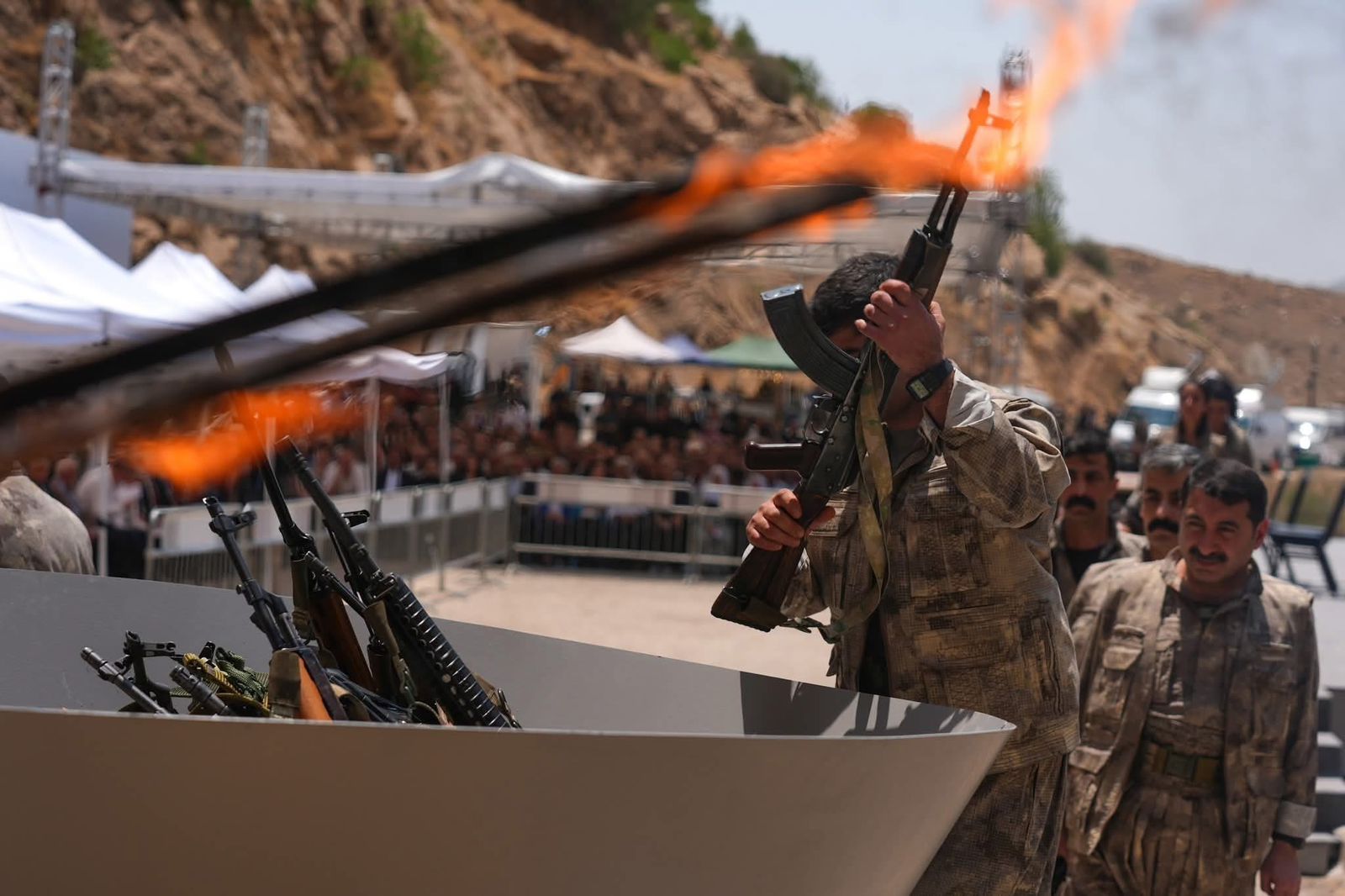Ako Gharib, director of Amna Suraka National Museum, announces that destroyed PKK weapons will remain at Jasana Cave rather than being transferred to the museum. Meanwhile, artist Zirek Mira requests access to weapon remnants to create a peace monument, while the historic cave continues to serve as a symbol of Kurdish resistance and journalism heritage.
Museum Director’s Decision on Weapon Preservation
Ako Gharib, director of the Amna Suraka National Museum, delivered significant news regarding the fate of the weapons destroyed during the PKK disarmament ceremony. In his statement, Gharib revealed that initial plans to transfer the destroyed weapons to the national museum for display have been fundamentally altered.
“Previously, there was a decision that the weapons burned by the Kurdistan Workers’ Party (PKK) should be brought to the Amna Suraka National Museum to be displayed and preserved there, but the decision has been changed,” Gharib explained. This modification reflects a deeper understanding of the symbolic importance of maintaining the weapons’ connection to their destruction site.
Gharib further clarified the new arrangement: “They want to keep the burned weapons at Jasana Cave itself, and on Saturday, July 12, in a ceremony, a special place will be designated for protecting the weapons and a decision will be made on how to preserve them.” This decision demonstrates the authorities’ recognition that the cave’s historical significance enhances the symbolic power of the peace gesture.
On July 11, thirty PKK members ceremonially burned their weapons in front of Jasana Cave, with representatives from Turkish political parties, the Kurdistan Regional Government, the Patriotic Union of Kurdistan, and the Kurdistan Democratic Party in attendance. The museum director’s announcement indicates a shift from traditional museum preservation to contextual historical preservation. By keeping the destroyed weapons at Jasana Cave, officials acknowledge that the site itself contributes to the narrative of transformation from conflict to peace.
Artist’s Vision for Peace Monument
Meanwhile, Kurdish artist and sculptor Zirek Mira has made a request to access the remnants of the destroyed weapons for an artistic project. The artist seeks to create a monument that communicates a message about Kurdish identity and values to the global community.
“I want to show the world that Kurds are a nation that has always sought peace and has tried to resolve issues peacefully,” Zirek Mira stated, articulating the philosophical foundation of his proposed monument. This statement reflects a broader cultural narrative that positions the Kurdish people as inherently peaceful, despite their long history of armed resistance.
The artist’s request involves using the weapon remnants to create a conceptual transformation. By converting the physical materials of warfare into artistic expressions of peace, Zirek Mira proposes to create a representation of the Kurdish transition from armed struggle to diplomatic resolution. The proposed monument would utilize actual metal fragments, ash, and debris from the destroyed weapons.
This artistic concept embodies the broader themes of reconciliation and transformation that characterize the current peace process. Rather than simply commemorating the end of armed conflict, Zirek Mira’s monument would celebrate the positive values that emerge from choosing peace over violence.
Jasana Cave: Sacred Ground of Kurdish Heritage
Jasana Cave stands as one of the most significant historical landmarks in Kurdish cultural and political history, serving as both a strategic military position and the birthplace of Kurdish mountain journalism. Located 50 kilometers west of Sulaymaniyah city in the Surdash sub-district, the cave occupies a strategic position behind Kani Khan village on the slopes of Nabi Agha heights in the Sara mountains.
The cave’s distinctive triangular entrance measures 40 meters in length and 9 meters in width, reaching 7 meters in height. The interior consists of two spacious chambers, providing the protected environment that has sheltered Kurdish resistance movements throughout various historical periods.
In 1923, Jasana Cave achieved legendary status as the birthplace of “Bangi Haq” (Call of Truth), the first mountain newspaper in Kurdish media history. This groundbreaking publication emerged during Sheikh Mahmud’s revolution, when the cave served as a crucial sanctuary for Kurdish freedom fighters.
During Sheikh Mahmud’s uprising, the cave functioned as more than just a military refuge. It became a center of Kurdish intellectual and political awakening, where three issues of Bangi Haq were produced and distributed. This newspaper provided the ideological foundation for the struggle for independence, making the cave a symbolic cornerstone of Kurdish political consciousness.
Throughout the contemporary Kurdish revolution, Peshmerga forces utilized Jasana Cave as a vital stronghold against Saddam Hussein’s Baath Party dictatorship. Today, the cave functions as a recognized historical landmark, regularly visited by organizations and educational institutions that introduce future generations to this important site.


